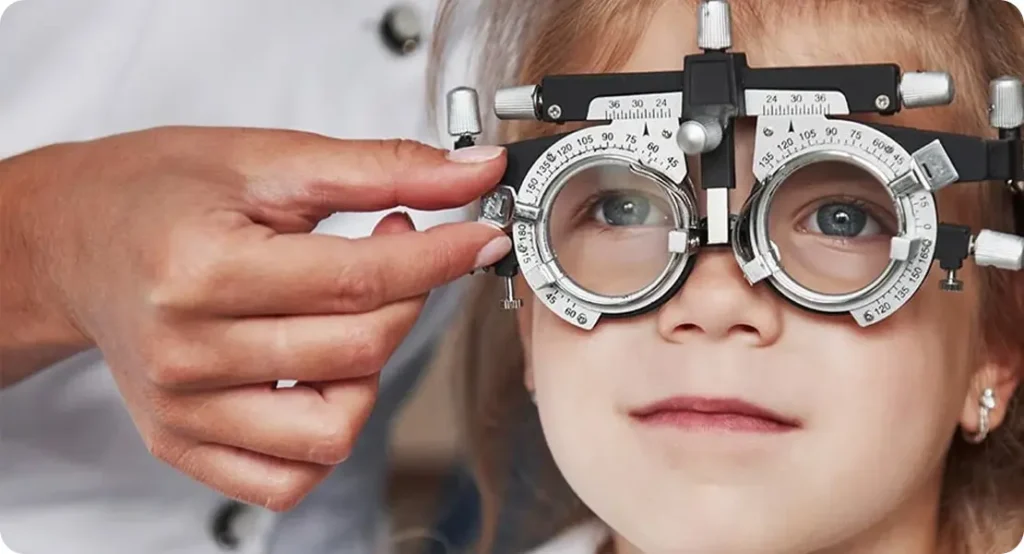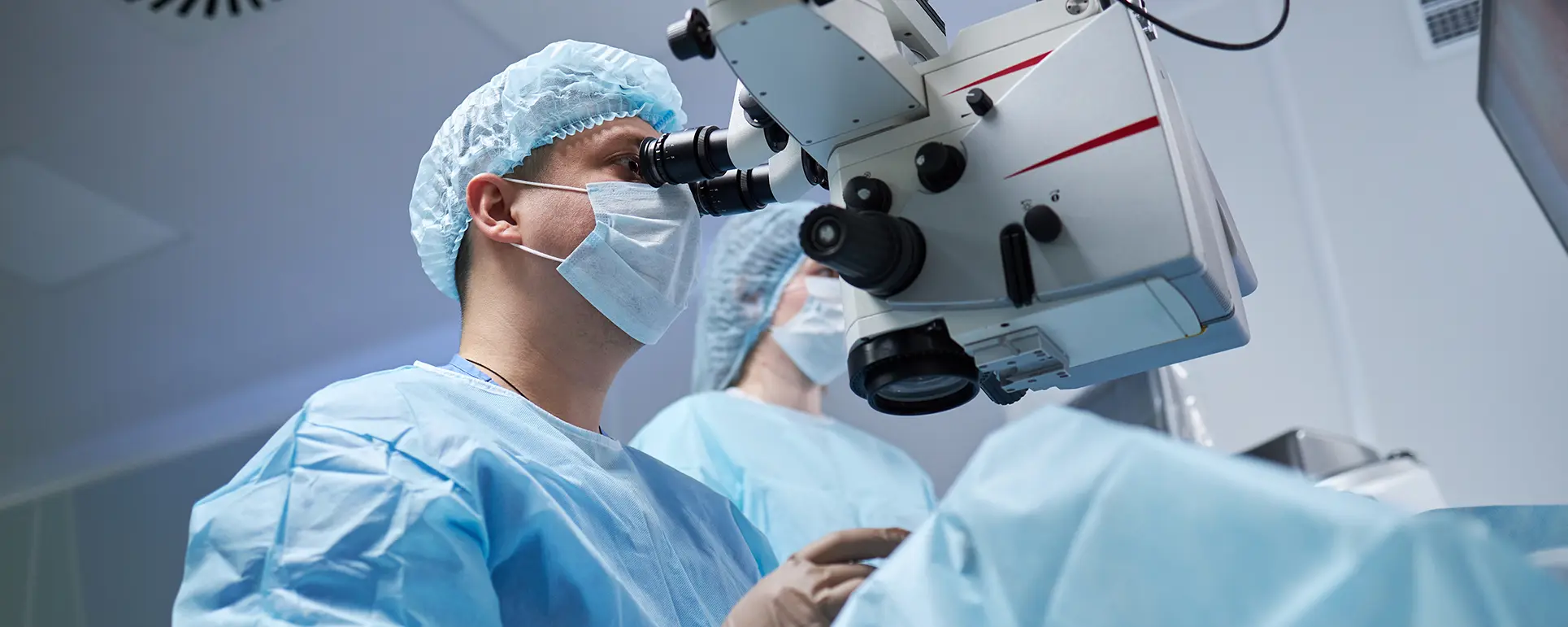Cataracts are typically associated with ageing, but for people with galactosaemia, they can develop surprisingly early—sometimes even during infancy. If you or your child has been diagnosed with galactosaemia and cataracts have been identified, it’s natural to feel overwhelmed. What does the diagnosis mean? Is surgery inevitable? And if so, when is the right time? In this article, we’ll take a practical, research-informed look at how galactosaemia leads to cataracts, what to expect from the surgical process, and how outcomes can be optimised.
What Is Galactosaemia?
Galactosaemia is a rare genetic metabolic disorder where the body is unable to properly break down galactose, a sugar found primarily in dairy products. This happens because of a deficiency in one of three key enzymes involved in galactose metabolism. The most common and severe form is classic galactosaemia, which stems from a deficiency in the GALT enzyme (galactose-1-phosphate uridylyltransferase).
When galactose isn’t processed properly, it builds up in the body, leading to toxic levels of galactitol—an alcohol-like substance that accumulates particularly in the lens of the eye. Over time, this causes the lens to become cloudy, resulting in cataracts. In many cases, this process begins rapidly after birth, often within weeks.
While galactosaemia is typically detected through newborn screening in the UK and other developed countries, early detection doesn’t always prevent every complication. Cataracts may still develop even with dietary control, although early dietary intervention can reduce the severity and slow progression.
Why Cataracts Form in Galactosaemia
To understand cataract formation in this context, it helps to know a bit about how the eye functions. The lens inside your eye focuses light on the retina to create sharp images. It’s mostly made of proteins and water arranged in a very precise way to keep it clear. In galactosaemia, when galactose builds up, it’s converted to galactitol, which draws water into the lens fibres.
This osmotic imbalance causes swelling, structural damage, and eventual clouding of the lens. This is different from the slow age-related cataract formation seen in older adults; in galactosaemia, the onset can be abrupt and visually significant very early in life.
Interestingly, researchers have also noted that once galactose is removed from the diet, there’s a possibility—especially in neonates—that cataracts may reverse to some extent. However, this isn’t always the case, especially in older children or when the cataracts are more advanced.
How Cataracts Are Detected in Children with Galactosaemia

Routine monitoring plays a key role in catching cataracts early in children with galactosaemia. Paediatricians and ophthalmologists will regularly assess the clarity of the eye’s red reflex during infant exams. If any asymmetry or clouding is noted, further examination is carried out using slit-lamp biomicroscopy and other imaging tools.
In babies, symptoms like a white or grey pupil, poor visual tracking, squinting, or light sensitivity may also prompt concern. As children grow, they may report blurry vision or trouble reading if the cataracts haven’t been diagnosed earlier. Regular ophthalmic assessments are often part of ongoing galactosaemia care plans.
When Is Cataract Surgery Needed?
Not every cataract requires surgery straight away. In mild cases, particularly in infants where the clouding is minimal, surgery might not be immediately necessary—especially if the cataract isn’t impairing vision. However, once vision becomes significantly affected, surgery is typically recommended to prevent amblyopia (lazy eye) or developmental delay in visual processing.
In children, timing is especially important. If the cataracts are dense and bilateral (in both eyes), they are usually operated on within the first few months of life to ensure the child develops normal vision. Even unilateral cataracts (in one eye) can require prompt intervention if they are visually significant.
The paediatric eye surgery team will evaluate several factors, including the child’s age, cataract density, visual development, and any other systemic issues related to galactosaemia before making a surgical recommendation.
What Happens During Cataract Surgery?
Cataract surgery in children with galactosaemia isn’t significantly different in technique from surgery in other children, but there are some additional considerations. The procedure usually involves removing the clouded lens and replacing it with an intraocular lens (IOL), although in very young infants, IOL implantation may be delayed and corrected with contact lenses or glasses until the eye is more developed.
General anaesthesia is required for children. The surgery itself is delicate and precise, taking around 30 to 60 minutes per eye. The surgeon will use ultrasound (phacoemulsification) or manual techniques to remove the lens material and ensure a clear visual axis is restored.
Preoperative assessments often include detailed ocular imaging and measurements to determine the right IOL power, particularly as eye growth continues post-surgery. Children will usually have their surgeries done in a specialist centre with experience in paediatric cataracts.
What Are the Risks and Outcomes?
Like any surgery, there are risks. In children with galactosaemia, the most common complications are similar to those seen in other paediatric cataract surgeries—posterior capsule opacification (a type of ‘secondary cataract’), increased intraocular pressure, inflammation, or the need for further surgeries.
However, when cataract surgery is done promptly and followed up with proper visual rehabilitation (glasses, contact lenses, or amblyopia therapy), many children go on to have excellent functional vision. Long-term monitoring is essential. There’s also some research suggesting that oxidative stress and other biochemical imbalances from galactosaemia may affect healing or increase complication risk, but this varies between individuals.
Importantly, dietary control remains essential postoperatively. The eye doesn’t exist in isolation—so if galactose intake is not carefully managed, systemic effects can still impact ocular health.
Life After Surgery: Long-Term Vision and Eye Care
After surgery, children need close follow-up with an eye care team. This includes vision checks, patching therapy if amblyopia is present, and ensuring the new lens is focusing correctly. Glasses or contact lenses may still be needed even after lens implantation, especially as children grow and their eye shape changes.
Regular follow-up exams will continue through childhood and adolescence. There’s often a strong emphasis on multidisciplinary care—bringing together paediatricians, dietitians, geneticists, and ophthalmologists—to ensure all aspects of galactosaemia and its impact are being addressed.
Parents also play a vital role in monitoring vision, using prescribed glasses or patches as directed, and attending all scheduled appointments. If any new visual symptoms develop—like eye redness, squinting, or signs of infection—they should be addressed quickly.
Emerging Research and Future Directions

Recent studies are exploring how early and strict dietary intervention may prevent cataract formation altogether in some infants with galactosaemia. There’s also interest in whether gene therapy or enzyme replacement might reduce long-term complications, including those affecting the eyes.
From a surgical perspective, advances in intraoperative imaging and IOL materials may continue to improve outcomes for paediatric patients. There’s ongoing work examining how IOLs behave in growing eyes and how best to reduce complications like secondary opacification in this group.
In addition, better understanding of the molecular changes caused by galactitol accumulation could lead to new treatments aimed at preventing cataract formation rather than just treating it once it occurs.
FAQ: Cataract Surgery and Galactosaemia
- Can cataracts from galactosaemia go away without surgery?
In some newborns with galactosaemia, cataracts may partially or fully clear if a galactose-free diet is started very early—ideally within the first few days of life. However, this reversal doesn’t occur in all cases and is more likely when cataracts are detected at the earliest stage. Once the lens damage becomes more advanced or if the diagnosis is delayed, surgery is typically the only way to restore clear vision. - At what age do children with galactosaemia typically need cataract surgery?
If cataracts are dense enough to impair vision, especially in both eyes, surgery is usually performed within the first two to three months of life. This early intervention helps ensure normal visual development and reduces the risk of amblyopia. For milder or slowly progressing cataracts, surgery may be delayed until later childhood or even adolescence, depending on how the condition evolves and whether visual function is compromised. - Is cataract surgery riskier in children with galactosaemia?
While the procedure itself is similar to cataract surgery in other children, galactosaemia may slightly increase the risk of inflammation or healing complications due to systemic metabolic effects. The key to a safe outcome lies in performing the surgery in a specialist centre with paediatric experience and ensuring ongoing metabolic control with strict dietary adherence before and after the operation. - Will my child still need glasses after cataract surgery?
Yes, most children will require glasses or contact lenses after surgery, particularly if the procedure was done in infancy without intraocular lens implantation. Even when an artificial lens is inserted, glasses are often needed to correct residual refractive errors or support developing vision. As the child grows, prescriptions may change and need updating during follow-up visits. - Can cataracts return after surgery?
The natural lens, once removed, does not grow back, so the cataract itself can’t return. However, many children develop posterior capsule opacification (PCO), sometimes called a “secondary cataract,” months or years after surgery. This is a treatable condition and is typically resolved with a painless outpatient laser procedure to restore visual clarity. - How is the right lens power chosen for surgery?
To calculate the most suitable intraocular lens (IOL) power, detailed measurements of the child’s eye are taken before surgery using tools like biometry and keratometry. Because a child’s eyes continue to grow, surgeons often slightly undercorrect the lens power to allow for future changes. This approach balances the need for good vision now with flexibility for the future. - Does a strict galactose-free diet prevent cataracts?
A galactose-free diet started shortly after birth can significantly reduce the risk or severity of cataracts in infants with galactosaemia. However, it doesn’t guarantee full prevention, as some individuals may still develop lens clouding despite excellent dietary control. The exact reason for this variability is still being explored in ongoing research. - Are both eyes always operated on at once?
No, in most cases where both eyes need surgery, each eye is operated on separately, often a few days apart. This approach allows surgeons to assess healing and minimise risk, especially in very young infants. Operating on both eyes simultaneously is generally avoided in paediatric cases unless the situation is urgent and the benefits clearly outweigh the risks. - Is cataract surgery painful for children?
The surgery is performed under general anaesthesia, so children do not feel any pain during the procedure. After the operation, some mild discomfort, scratchiness, or light sensitivity may occur, but this is usually temporary and well-controlled with prescribed eye drops and pain relief if needed. - Will my child need additional surgeries later in life?
It’s possible. Some children may need follow-up procedures to treat secondary cataracts, adjust visual correction, or manage eye growth changes. Long-term follow-up with an eye care team is essential to track visual development and address any complications early, ensuring the best possible vision over time.
Final Thoughts
Cataracts caused by galactosaemia can sound alarming, especially when they appear in infancy or childhood. But with early detection, expert surgical intervention, and coordinated care, the outlook is often very good. Vision can be restored or significantly improved, giving children the chance to grow and thrive with good sight.
References
1. Beigi, B., O’Keefe, M., Bowell, R., Naughten, E., Badawi, N. & Lanigan, B., 1993. Ophthalmic findings in classical galactosaemia—a prospective study. British Journal of Ophthalmology, 77(3), pp.162–164.
Available at: https://doi.org/10.1136/bjo.77.3.162
2. Succoio, M., Sacchettini, R., Rossi, A., Parenti, G. & Ruoppolo, M., 2022. Galactosemia: Biochemistry, Molecular Genetics, Newborn Screening, and Treatment. Biomolecules, 12(7), 968.
Available at: https://doi.org/10.3390/biom12070968
3. Holton, J.B., 2007. Galactokinase deficiency (galactosemia type II): causes early cataracts reversible by diet. Journal of Inherited Metabolic Disease, Review.
Available at: https://en.wikipedia.org/wiki/Galactokinase_deficiency
4. EyeWiki, 2025. Inborn errors of galactose metabolism. EyeWiki article summarizing how galactitol accumulation leads to lens opacities.
Available at: https://eyewiki.org/Inborn_Errors_of_Galactose_Metabolism

